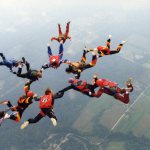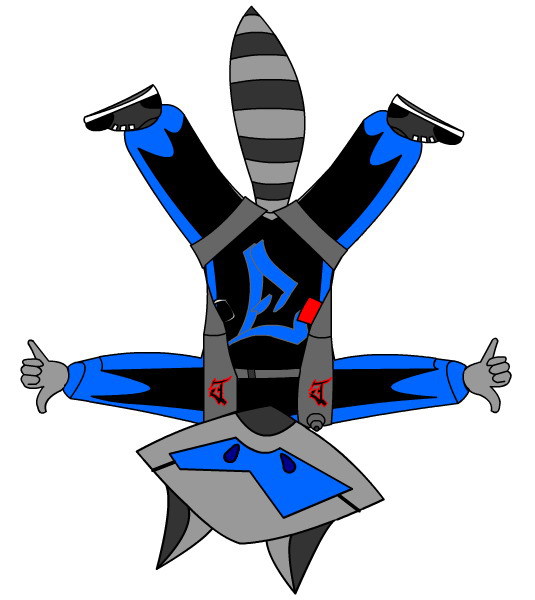Recommended Posts
I think I'm starting to understand what you're saying, but I still don't agree with all of your points. As far as throw from the plane, we're generally in agreement. However, as unpredictable as the difference in throw from an RW group and a freefly group can be, it's likely that putting the slower fallers out first maximizes separation more often than not. Whether it's equivalent to a 3 second difference or a half second difference, I don't know. But putting freeflyers out first will put the groups closer together by the same amount, whatever it may be, except in less likely cases where the RW group gets more throw.
Now as far as time between groups... you're saying that separation at deployment isn't affected by wind speed, as long as the wind speed is steady, right? You're taking into account that after the first group opens, they will continue to drift with the wind away from the second group, so separation at the second group's deployment time is independent of wind speed. Personally, I wouldn't rely on wind drift under canopy for horizontal separation. Canopies are flying in all directions right after opening. If we all jumped non-steerable rounds, it'd be a different story and I might agree with you.
But now lets talk about order. You seem to advocate putting fast fallers out first to minimize canopy traffic. I'd like to see your graphics of the freefall trajectories and how exit order affects separation in freefall and at opening. Kallend's model clearly shows how, on an upwind jumprun, for any given exit separation and wind speed, putting out the fast fallers after the slow fallers maximizes separation. In fact, fast fallers out first tends to cause the slow falling group to cross paths with the fast falling group, risking a collision if the lower group has a premature deployment. Does your model look different?
Dave
Now as far as time between groups... you're saying that separation at deployment isn't affected by wind speed, as long as the wind speed is steady, right? You're taking into account that after the first group opens, they will continue to drift with the wind away from the second group, so separation at the second group's deployment time is independent of wind speed. Personally, I wouldn't rely on wind drift under canopy for horizontal separation. Canopies are flying in all directions right after opening. If we all jumped non-steerable rounds, it'd be a different story and I might agree with you.
But now lets talk about order. You seem to advocate putting fast fallers out first to minimize canopy traffic. I'd like to see your graphics of the freefall trajectories and how exit order affects separation in freefall and at opening. Kallend's model clearly shows how, on an upwind jumprun, for any given exit separation and wind speed, putting out the fast fallers after the slow fallers maximizes separation. In fact, fast fallers out first tends to cause the slow falling group to cross paths with the fast falling group, risking a collision if the lower group has a premature deployment. Does your model look different?
Dave




If your consern is spot - than yes, ground distanse and groun speed you should taking into account
If your consern is the horisontal separation between the groups of skydivers (collision on deployment) - than air distanse and airspeed does matter
Why we should take extra time between exiting groups in high wing/low groundspeed jumprun? Becouse we can! Becouse usually you want both of safety on deployment time and not so far spot - you have to find compromise between amount of delay and distance covered by plane under the ground... when wind is high and groundspeed is low you just have oportunity to give more delay and get more separation between skydivers at deployment altitude for the same spot
Share this post
Link to post
Share on other sites